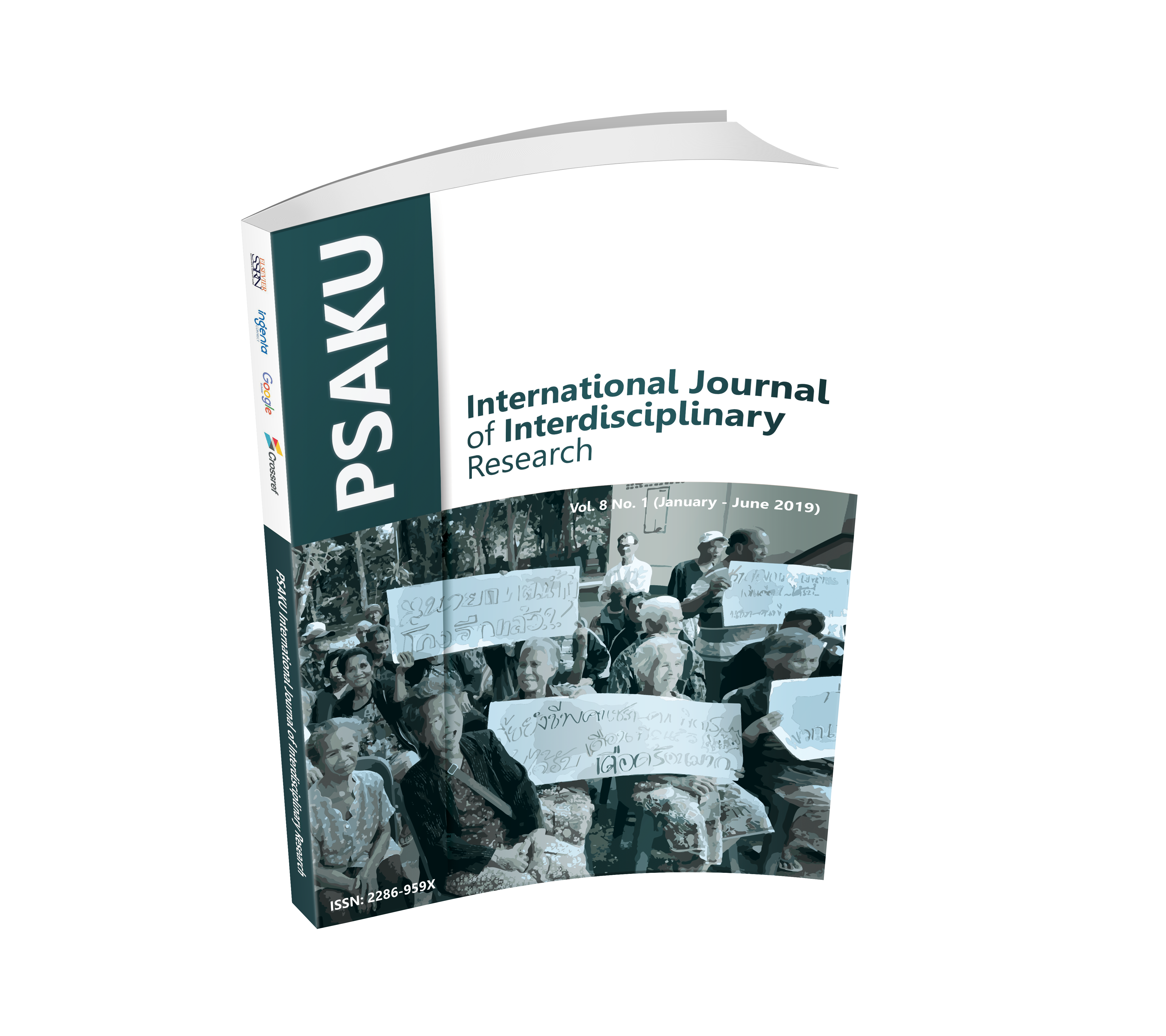Linguistic Characteristics of Village Typonyms in Yala, Thailand: An Analysis of Functional-Typological Grammar
Keywords:
Linguistic Characteristics, Typonyms, Functional-Typological GrammarAbstract
This article was aimed at 1) analyzing forms and structures of village typonyms in Yala Province and 2) analyzing syntax of typonyms of 379 villages in Yala Province using the functional-typological approach. The research results were as follows: First, the forms of village typonyms in Yala Province can be divided into four groups: (1) singular form, (2) phrase form, (3) sentence form, and (4) complex form, and the most common form is phrase form, followed by singular form, sentence form, and complex form, respectively. Second, the syntax of village typonyms in Yala Province can be divided into grammatical and semantic roles. Grammatical roles can be divided into two groups: 1) phrase syntax and 2) sentence syntax. The structure of phrase syntax consists of (1) main - supplementary units and (2) supplementary - main units. Sentence syntax can be divided into 1) simple clauses with the following structures: (1) subject-verb and (2) verb-object, and 2) variant clauses with the fronting/Y-movement/topicalization with object-verb structure. Semantic roles can be divided into two groups: 1) phrase semantics, which can be divided into two types: (1) noun phrase semantics consisting of thirty six groups and (2) preposition phrase semantics consisting of one group, and 2) sentence semantics, which can be divided into two types: (1) simple clause semantics consisting of two types: the subject acts as the patient or agent and the object acts as the patient, and (2) variant clause semantics with the subject acting as the patient.
Downloads












.png)


